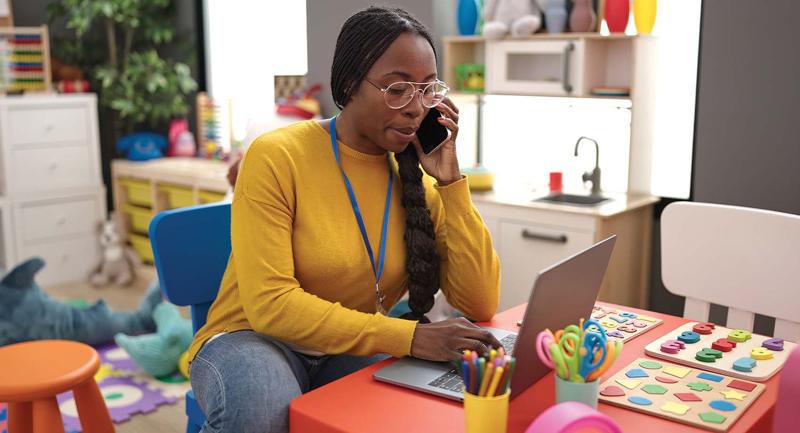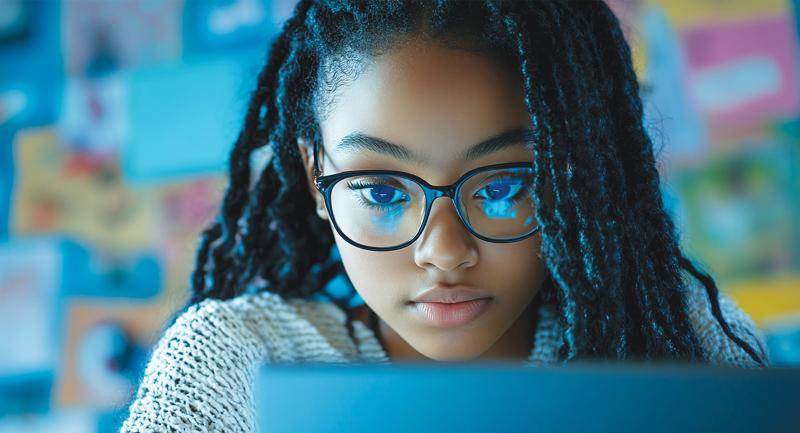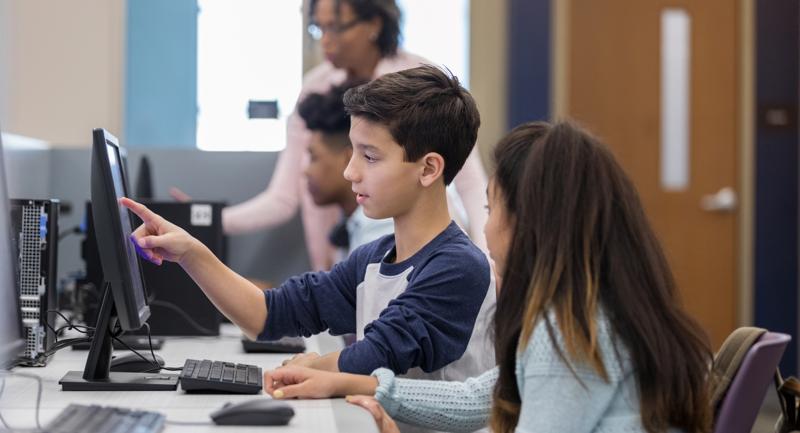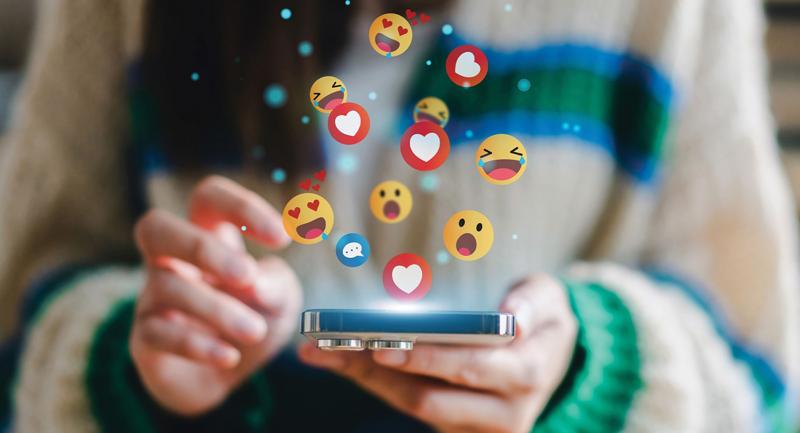Recharge the Classroom
In our 10th grade global studies 1:1 classroom, we noticed cell phones were more of a distraction than a help. To help fix this issue, we created a cell phone charging station. Students can leave their phone to charge the entire period—and many do so voluntarily. However, if students are struggling to focus due to their phones, we are happy to place the phone on the charging station to retrieve at the end of the period.
—Kim Webb, instructional support teacher, and Kris VanDuyne, social studies teacher, Canandaigua City School District, Canandaigua, New York
Keep Tabs on Browsing
As a district, we use a computer monitoring service called GoGuardian. It allows us to see what the students are viewing at any given time. It also allows us to print out their browsing history. One key way of keeping students on task is the Scenes feature, which allows teachers to create a limited list of accessible websites and a tab limit.
—Brian Krause, ELA teacher, Grant Middle School, Fairview Heights, IL
Strategic Tech-Assisted Classroom Management
The adage that "a well-planned lesson is your best classroom management plan" is truer than ever before. Meaningful technology integration can be such a powerful lever for student engagement while simultaneously serving as one of the best classroom management plans in a 1:1 setting. Teachers should strategically use technology to help students create, to play an active role in their learning, to develop autonomy, to explore their interests, and to make sense of this massive world. These steps, in conjunction with educational apps and research-based, time-tested practices, can truly help teachers minimize distractions in the classroom while making their educational environment—and their students—future ready.
—Matt Donta, lead administrator for teaching and learning, Kinglee High School, Zhengzhou, China
Let There Be Selfies!
I encourage all the classroom teachers I work with to give their students some free time with their devices. So many times, device distraction comes from students wanting to understand, explore, and personalize their computers. If you can work in 10 minutes on a Friday for students to change their wallpaper or profile picture, set defaults or create shortcuts, then that can help students to be more efficient and focus on the task at hand for the rest of the week. This personalization time also creates a sense of ownership of the device (less accidents and broken pieces), gives students the opportunity to practice their digital literacy skills and learn how different settings work, and offers a chance to talk about digital citizenship when choosing an appropriate picture to be displayed.
—Rebecca Chambers, instructional technology coach, Omaha Public Schools, Omaha, Nebraska








